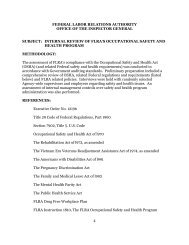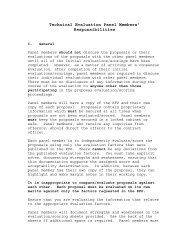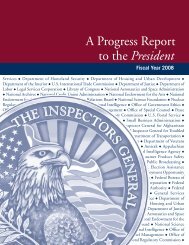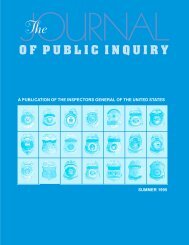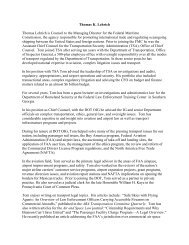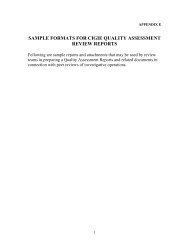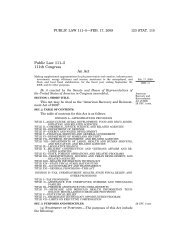GAO-12-208G, Designing Evaluations: 2012 Revision
GAO-12-208G, Designing Evaluations: 2012 Revision
GAO-12-208G, Designing Evaluations: 2012 Revision
Create successful ePaper yourself
Turn your PDF publications into a flip-book with our unique Google optimized e-Paper software.
Assess the Relevance and<br />
Quality of Available Data<br />
Sources<br />
Chapter 3: The Process of Selecting an<br />
Evaluation Design<br />
especially well or especially poorly. Findings supported by a number of<br />
soundly designed and executed studies add strength to the knowledge<br />
base exceeding that of any single study, especially when the findings are<br />
consistent across studies that used different methods. If, however, the<br />
studies produced inconsistent findings, systematic analysis of the<br />
circumstances and methods used across a number of soundly designed<br />
and executed studies may provide clues to explain variations in program<br />
performance (<strong>GAO</strong> 1992b). For example, differences between<br />
communities in how they staff or execute a program or in their client<br />
populations may explain differences in their effectiveness.<br />
A variety of statistical approaches have been proposed for statistically<br />
cumulating the results of several studies. A widely used procedure for<br />
answering questions about program impacts is “meta-analysis,” which is a<br />
way of analyzing “effect sizes” across several studies. Effect size is a<br />
measure of the difference in outcome between a treatment group and a<br />
comparison group. (For more information, see Lipsey and Wilson 2000.)<br />
Depending on the program and study question, potential sources for<br />
evidence on the evaluation question include program administrative<br />
records, grantee reports, performance monitoring data, surveys of<br />
program participants, and existing surveys of the national population or<br />
private or public facilities. In addition, the evaluator may choose to<br />
conduct independent observations or interviews with public officials,<br />
program participants, or persons or organizations doing business with<br />
public agencies.<br />
In selecting sources of evidence to answer the evaluation question, the<br />
evaluator must assess whether these sources will provide evidence that<br />
is both sufficient and appropriate to support findings and conclusions on<br />
the evaluation question. Sufficiency refers to the quantity of evidence—<br />
whether it is enough to persuade a knowledgeable person that the<br />
findings are reasonable. Appropriateness refers to the relevance, validity,<br />
and reliability of the evidence in supporting the evaluation objectives. The<br />
level of effort required to ensure that computer-processed data (such as<br />
agency records) are sufficiently reliable for use will depend on the extent<br />
to which the data will be used to support findings and conclusions and the<br />
level of risk or sensitivity associated with the study. (See <strong>GAO</strong> 2009 for<br />
more detailed guidance on testing the reliability of computer-processed<br />
data.)<br />
Page 22 <strong>GAO</strong>-<strong>12</strong>-<strong>208G</strong>




